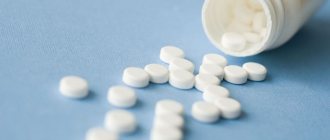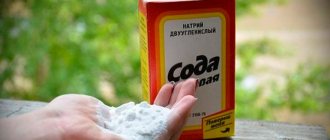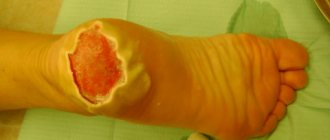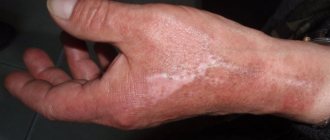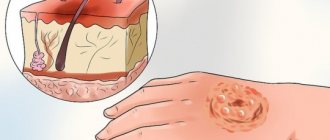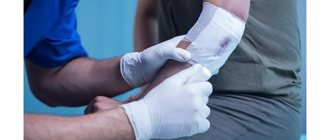An oral burn is damage to the oral mucosa through exposure to high temperature, chemicals, electrical or light radiation. This condition is extremely painful, as there are a large number of nerve endings in the mouth. The mucous tissue becomes swollen and red. Later, the burnt epithelium peels off and painful areas appear.
Treatment for a burn will depend on the extent of tissue damage and the area of spread of the injury. First of all, it will be aimed at neutralizing the cause of the injury and relieving the pain syndrome. Further treatment is aimed at preventing infection of the affected area and speeding up its healing.
Types of burns of ENT organs
Like any others, they are divided according to severity - from the first with minor damage to the severe fourth, up to tissue necrosis. The nature of the injuries depends on the temperature and concentration of the substance, as well as the time of contact with it.
Depending on the injured area, damage can be external, internal or combined. In the first case, the skin of the outer ear and wings of the nose is affected. In case of internal lesions, the nasopharynx, trachea, throat and larynx, and auditory canal are affected.
Taking into account the source, thermal and chemical injuries are distinguished. In the first case, the cause is contact with open fire, boiling water, hot oil, hot metal, etc. Chemical burns are more common. They occur if you swallow an acid or alkali, or inhale their vapors. They occur upon contact with aggressive household chemicals, vinegar essence, and ammonia.
How does it manifest?
Doctors identify the following clinical symptoms that appear in a victim with a throat burn:
- Sharp pain in the throat, with a tendency to intensify when trying to swallow;
- Intense salivation;
- Nausea and vomiting;
- Cough syndrome;
- Pain localized in the chest area;
- Voice changes;
- Feeling of lack of air;
- Swelling of the cervical lymph nodes;
- A strong burning sensation in the palate;
- Hiccups.
In severe cases, a state of shock may develop. Even minor injuries can cause respiratory problems and cause suffocation, especially when it comes to a child or an elderly person.
Therefore, having identified the first symptoms characteristic of this injury, you should urgently provide first aid to the victim, then take him to a medical facility and transfer him to the hands of professionals.
Possible consequences
With this injury, patients are highly likely to develop complications and adverse consequences, which include:
- Chemical intoxication, poisoning;
- Collapse;
- Reflex cessation of breathing associated with damage to nerve endings;
- Scarring of the larynx, pharynx and esophagus area.
What is the danger
- If the mucous membranes of the throat or nose are affected, there is a high probability of swelling. It spreads quickly and makes breathing difficult. Up to the point of suffocation.
- When ingested or inhaled vapors of acids and alkalis, damage to the nasopharynx and throat is usually combined with deeper damage to the trachea, esophagus and other internal organs. Necrosis of esophageal tissue and perforation are possible.
- External burns cause intoxication and take a long time to heal without proper treatment. The wound surface becomes infected.
- If the lesions are strong and extensive, a painful shock occurs.
Complications of chemical burns
Extensive and deep local burn injuries lead to the development of burn disease, which is accompanied by a violation of the water-salt balance, circulatory disorders, depletion of the immune system, and intoxication.
With progressive burns, various complications arise:
- intestinal paresis - paralysis of the muscles of the intestinal wall;
- myocarditis - inflammation in the muscular lining of the heart;
- pericarditis - inflammation of the outer lining of the heart;
- pneumonia;
- bronchitis;
- pulmonary edema;
- pleurisy;
- glomerulonephritis is an immunoinflammatory kidney disease,
- pyelitis - inflammation in the renal pelvis.
Damage to deep tissues is aggravated by the formation of limited or diffuse purulent-inflammatory changes in the muscles, subcutaneous fat, the occurrence of sepsis, and arthritis. Undesirable consequences of burns include the formation of rough, inelastic scars.
Reference!
Exposure to any physical and chemical factor that causes incomplete damage to the surface layer of skin in an adult leads to deep trauma in children.
Burns to the eyes, esophagus, and respiratory tract are more severe and disrupt important vital functions.
Among the complications of chemical damage to the respiratory and digestive organs, the most common are:
- swelling of the larynx and pharynx,
- laryngeal stenosis - narrowing of the lumen,
- respiratory failure,
- phlegmon of the neck,
- chronic pharyngitis,
- perforation of the esophagus.
When chemical damage occurs to the deep layers of the mucous and submucosal membranes, toxic substances enter the systemic bloodstream and cause damage to the liver, kidneys, and brain.
The outcomes of severe eye burns include decreased visual function, atrophy of the eyeball, and formation of a cataract.
Alarming symptoms
If you have come into contact with a chemical or vapor, you should immediately contact a clinic. Otherwise, the condition will only get worse. There is a high probability of internal damage if:
- Severe, persistent pain appeared in the mouth, throat, and along the esophagus.
- When you swallow, the discomfort intensifies, and you can’t even drink the liquid.
- There is vomiting, especially with blood.
- Profuse salivation began.
- It became difficult to breathe.
- The temperature has risen (due to intoxication).
- Swelling of the mucous membrane.
- The victim is either drowsy or, on the contrary, restless.
- Severe burns of external tissues, blisters.
Clinical picture
After a burn, in the first hours and even days, patients complain of severe pain in the throat, which intensifies when swallowing or coughing.
Extensive scabs form on the mucous membrane of the pharynx, lips and oral cavity, the color of which depends on the cause of the burn. With first-degree burns, only the surface layer of the epithelium is affected, which is torn off already on the 3-4th day. As a result, a somewhat hyperemic mucous membrane is exposed. The patient's general condition is usually not affected. In case of second degree burns, intoxication phenomena are observed on the 6-7th day. At this time, necrotic plaques are rejected, after which erosions with granulation healing remain, and subsequently a superficial scar is formed. With third-degree burns, the mucous membrane and underlying tissue can be affected to varying depths. ENT patients experience severe general intoxication. The scab begins to be shed at the end of the second week and deep ulcers form. Healing can last several weeks, and in severe cases, months. The formation of rough deforming scars occurs.
First aid for burns of the ears, nose, nasopharynx
If external damage of the first degree occurs, the skin is treated with a special product - ointment or foam. If necessary, you can take a pain reliever. If the damage to the integrity of the skin is more serious, you need to blot the surface with a weak solution of potassium permanganate and apply a dry sterile bandage. Next, seek medical help. The victim should drink more. Opening blisters is strictly prohibited - it will cause infection.
The degree of damage in internal burns is determined only by a doctor. Chemical injuries also require specialist supervision. If you know what caused it, then in the first minutes:
- The effect of alkali is neutralized with a weak solution of acid (1%) - citric, boric or acetic.
- If the cause is contact with acid, use alkali (2% baking soda solution).
- If there is no neutralizing agent, you can use ordinary boiled water for rinsing.
- When the cause is contact with quicklime, it is important to completely eliminate interaction with water. Use any vegetable oil.
- Medical assistance must be received within a maximum of six hours.
Description and causes of injury
A laryngeal burn is damage to the mucous membranes that occurs as a result of exposure to high temperatures or aggressive chemicals. This injury is quite widespread in everyday life, because a burn to the pharynx can be caused by consuming hot food and drinks. Damage from alcohol or acetic acid, Lugol, iodine, caustic alkalis, and concentrated steam is often found.
Experts consider a chemical burn to the throat to be the most difficult in terms of treatment and further recovery. Even a visit to the dentist can provoke injury, for example, if arsenic or other potent drugs come into contact with the mucous membranes of the larynx.
Young children are also susceptible to this type of damage and, due to their curiosity, may well try household chemicals. According to the international classification, burn injuries to the throat are divided by specialists into 3 degrees:
- Burn of the nasal mucosa: causes, symptoms, treatment methods
- The first degree is characterized by redness of the larynx and swelling of the mucous membranes.
- The second degree - manifests itself with specific blisters and the formation of gray films on a red and swollen throat.
- Third degree - manifested by necrosis of the affected tissues. Muscle tissue, ligaments and cartilage tissue are affected.
Lesions of the larynx of the second and third degrees require competent and timely assistance to the victim. Otherwise, extremely serious consequences are possible in the form of an attack of suffocation, poisoning, scarring and even the death of the patient!
Treatment of burns of ENT organs
Even when it seems that the damage is minor, it is better to see an otolaryngologist. If the injury occurred due to contact with a complex chemical compound or an aggressive cleaning agent, then take the packaging with you. A specialist will study the composition of the substance.
For severe burns, antishock medications are indicated. If breathing is difficult, there is severe swelling, prednisolone or calcium chloride is used.
A tracheostomy is performed to restore breathing.
Medical appointments are conducted by ENT specialists with almost 10 years of experience. At your appointment, you will be treated with affected tissues and mucous membranes, and a pain reliever will be selected. If necessary, they will arrange a consultation with a surgeon or refer you to a hospital. The center is open all week, seven days a week.
Nocturnal hypersecretion of gastric juice - why is it dangerous?
GERD is the most common disease of the esophagus, accompanied by heartburn, including attacks at night. For example, according to surveys, in the United States, 7% of the total population suffers from heartburn every day, and 14% suffer from heartburn less than once a week.
Shaker's study found that nocturnal symptoms of heartburn occur in most adults with heartburn:
- 79% of respondents say they feel heartburn at night;
- 75% of them say their symptoms affect their sleep quality;
- 63% believe that heartburn negatively affects the quality of sleep;
- 40% of respondents indicate a negative impact of the symptom on activity.
Of the 791 respondents who suffered from heartburn, only 41% used antisecretory drugs, and in only 49% of patients the drugs were effective in relieving symptoms.
Proximal migration of acid is thought to predispose to symptoms of GREB at night. Therefore, pathology can lead to damage to the upper respiratory tract and the appearance of respiratory diseases - pharyngitis, laryngitis, chronic bronchitis, bronchial asthma, sinusitis, chronic cough, hoarseness.
Chronical bronchitis
First aid
A favorable outcome in treatment will depend on the speed of assistance, the nature and degree of mucosal burn. Initially, it is established what could have caused the injury. To do this, a visual examination of the room is carried out, the presence of a specific odor of the substance that caused the burn is taken into account.
If this does not give any result, then you need to examine the wound and the patient’s mucous membrane, carefully examine the vomit and the type of scab.
If the burn was caused by interaction with alkali, then the vomit will contain pieces of mucous tissue. When injured by iodine, they turn blue or brown. After a burn, a scab appears, the color of which can tell a lot:
- with acid burns it is yellow, that is, the injury occurred due to nitric or hydrochloric acid;
- for black - sulfuric acid, for white - hydrogen peroxide.
Once the agent that caused the burn has been accurately determined, measures can begin to eliminate the effect of this chemical. There are rules that should be remembered and followed immediately after a throat injury.
If the injury occurred as a result of boiling water or hot liquid, then the injured person should be given a glass of cold water to drink. To relieve pain, you need to give novocaine or lidocaine.
When injury occurs from various acids, it is necessary to give a lime mixture.
For alkaline burns - diluted citric acid.
The person must be provided with antiseptics and given a flow of fresh air.
If the burn is quite serious, it is necessary not to waste time, but to take the victim to the hospital, where doctors can quickly provide qualified medical care.
Treatment methods
All further measures aimed at a speedy recovery will depend on how badly the throat is damaged. If doctors have diagnosed severity levels 2 or 3, then the patient must be treated in a hospital where qualified care will be provided. With severity level 1, restoration of the mucous membrane can occur at home; the main thing is to observe the following measures:
- Mandatory pain relief. You can take tablets or special solutions.
- Use valerian and bromine as sedatives.
- Treatment with antibiotics to minimize the spread of infection or infection.
- In order for the wound to heal faster and all functions to be restored, you need to infuse oil-based preparations with a special syringe.
- To reduce the level of intoxication, it is necessary to administer a solution of glucose, hemodez, rheopolyglucin.
- Gargle with antiseptic agents to prevent the development of further throat infections.
For the most severe and complex injuries, surgery may be prescribed. Most often, surgical intervention is needed in cases where scars or ulcers begin to form. Usually they begin to greatly interfere with the normal functioning of the body. Therefore, operations are performed on the trachea, larynx, and esophagus.
Nutrition and lifestyle during treatment and rehabilitation
A person should begin to follow a special diet so as not to aggravate the condition of a sore throat. A special diet will depend on the severity.
Sometimes the doctor may prescribe to eat food only in liquid form, rubbing it through a special grater or mixing it in a blender. Do not eat hot, spicy, sour or hard foods.
A person with a burnt throat should definitely eat oil about 4 times a day (vegetable or butter). To alleviate the condition, you can apply cold compresses to the damaged area. In this case, you should not strain your throat and maintain absolute silence for some time.
Features of treatment of Barrett's esophagus with nocturnal hypersecretion of gastric juice
Barrett's esophagus is a critical condition because changes in the esophageal mucosa can progress to adenocarcinoma. Effective control of hypersecretion of gastric juice can stop the progression of the disease and prevent malignant neoplasms. Therefore, effective 24-hour gastric acid suppression is critical for this group of patients. Unfortunately, in patients with scleroderma and esophagitis, it is possible to control acidity only in 50% of cases.
Removing acid from the esophagus is a two-step process involving volume reduction and acid neutralization. During this process, most of the acid is removed from the esophagus during primary and secondary peristalsis, the influence of bicarbonates secreted by the salivary and submucosal glands of the esophagus.
Normally, acid clearance decreases during sleep. At night, swallowing practically stops, and therefore there is no stimulation of primary peristalsis. Due to the low food content in the stomach, secondary peristalsis is practically not stimulated.
Based on experimental studies, it is assumed that secondary peristalsis in patients with GERD and the elderly is not affected by the same conditions as in healthy people. Acid clearance of the esophagus in patients at night is worse than during the day, not only because of the supine position, but also because of the lack of swallowing and the reduced content of bicarbonate in saliva, which neutralizes acid.
Nocturnal acid secretion can be especially harmful due to prolonged contact of the acid with the mucous membrane. Nocturnal hypersecretion of gastric acid is common in patients with severe reflux effects such as erosive esophagitis and Barrett's esophagus.
Barrett's esophagus
The nocturnal symptoms of GERD are influenced not only by a decrease in peristaltic activity, but also by a violation of the lower pressure in the esophagus and increased sensitivity of the esophageal mucosa.
When monitoring pH daily in patients with symptoms of nocturnal reflux, the most common cause of problems was moderate acidity (pH 4-7), pepsin and bile in the reflux.
Classification
We use the following classification of caustic injuries of the esophagus:
- 0 - no damage
- 1 - erythema and swelling
- 2 - ulceration is not circular
- 3 - circular ulceration
- 4 - perforation
There are also more detailed classifications:
- 1st degree - erythema and edema (damage is limited to the superficial layers of the mucosa, their rejection with subsequent epithelization without scar formation is possible).
- 2a degree - vulnerability, hemorrhages, erosions, exudate, blistering (mucosal, submucosal and muscular layers are involved).
- 2b degree - the same as 2a plus deep or circular ulcers.
- Grade 3a - deep ulcers, “gray or black esophagus” (transmural lesion).
- Grade 3 - extensive necrosis.
Related articles:
- Articles: ENDODIAGNOSTICS FOR ESOPHAGUS BURNS WITH ALKALI
- Articles: FEDERAL CLINICAL GUIDELINES “Toxic effect of corrosive substances”, “Toxic effect of soaps and detergents” 2014
- Articles: Zargar classification - assessment of damage to the esophagus when swallowing caustic (caustic) substances
CLASSIFICATIONS section
When to perform endoscopic examination?
Initial endoscopic examination should be performed within the first 2-3 days after injury. Contraindications to it are: shock, respiratory disorders, perforation, mediastinitis.
In the period from 5 days to 3 weeks, during the repair stage, the wall of the esophagus is thinnest and the risk of perforation during endoscopy is very high, therefore, it is highly undesirable to perform it at this time. After three weeks, dense fibrous tissue usually forms and endoscopy becomes safer. In addition to endoscopic examination, radiography of the chest and abdominal cavity, clinical blood test, urea, and liver tests are indicated.


